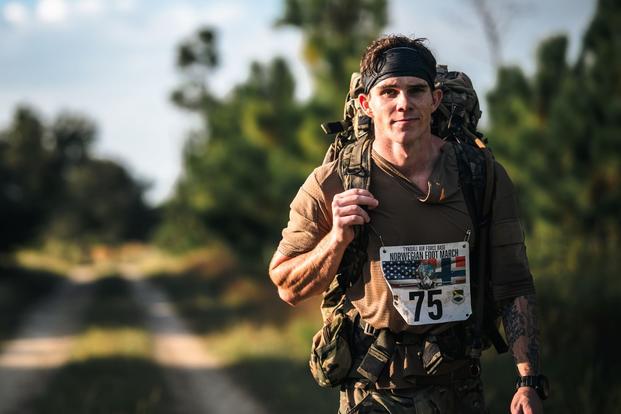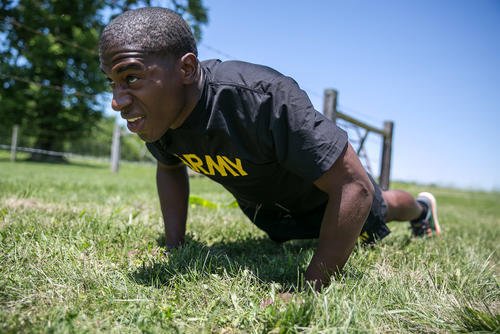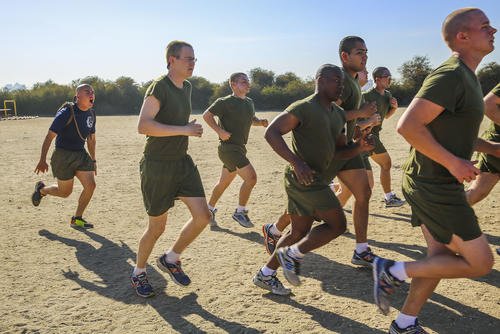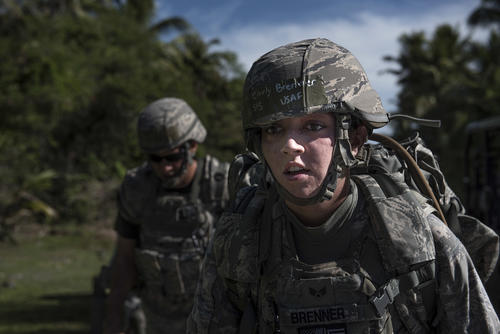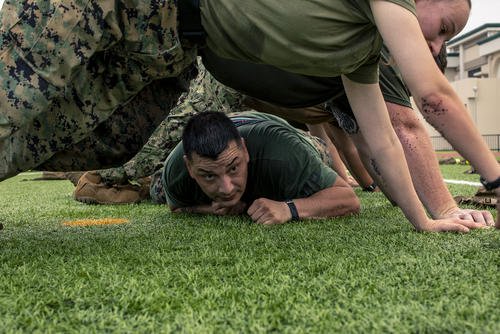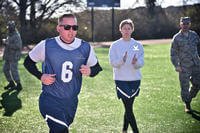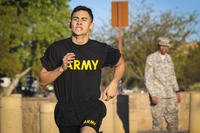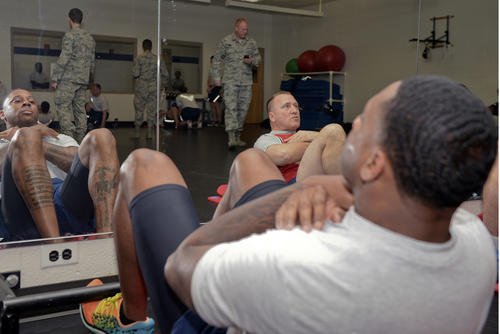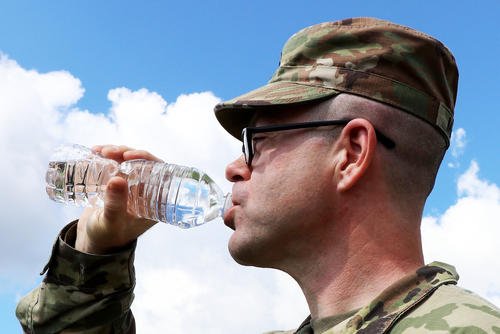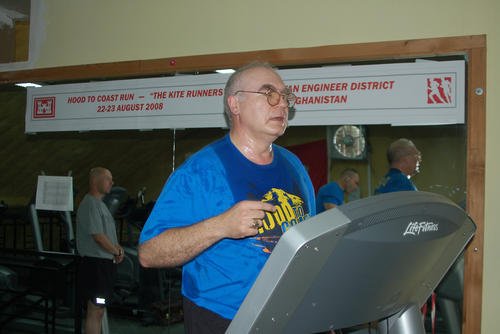Military fitness training has infiltrated our country’s fitness world for decades. From fitness enthusiasts putting on a backpack and walking for “fun” to paying to race an obstacle course, the military has inspired generations of military fitness workouts. Here are a few of the classic contributions and some of the latest trends that people have pulled from the military fitness world and added to their civilian lives:
1. Boot Camp Workouts. Many may remember the term, popular in the early 1990s, that became overused by the start of the new century. Group classes with a circuit of calisthenics and jogging were taught in most gyms by a “friendly” boot-camp instructor and were all the rage. These have evolved over the years with adding cardio machines, weighted equipment and suspension trainers.
2. Pull-up Bars, Calisthenics and the PT Pyramid. You’ll find pull-up bars just about everywhere on a military base. These pieces of equipment were added to many civilian home gyms with homemade versions, power towers and door jamb pull-up bar systems. Calisthenics such as pull-ups, push-ups and sit-ups were a staple of military fitness routines and were included in most branches' fitness tests until the shift to more “tactical fitness” training programs, which emerged by 2010. Many may have experienced these exercises with the classic calisthenics workout called the PT Pyramid. While the military may not be solely responsible for calisthenics in our world, many people’s first introduction to effective calisthenics-based workouts came through military training in boot camp or basic training.
3. Rucking. If you’ve served, you may not be enthusiastically embracing this trend in your regular training. But rucking is popular through programs such as Go-Ruck, where you can buy military-inspired backpacks and use them in group training events that mimic infantry and special forces training. Rucking, or walking long distances with a weighted backpack, is another trend that brings a taste of military conditioning to the civilian world, often used for cardio, strength training and burning more calories than just walking.
4. Obstacle Course Races. Obstacle courses are on every military base and used from basic to advanced training by military members. Since the early 2000s, obstacle course races have surged in popularity, challenging participants to climb, crawl and sprint through a variety of physical tests inspired directly by military training. Obstacle courses have become so popular that TV shows such as "American Ninja Warrior" air these competitions on prime-time television.
5. Weight Vests/Plate Carriers. Equipment inspired by body armor used in the military and police departments has moved into public and home gyms to make calisthenics and walking more difficult. A recent trend involves women walking with a weight vest, getting stronger and burning more calories than they do when walking alone. These are intensity-increasers and are great for making basic workouts more difficult.
6. Swimming with Fins. In gyms with swimming pools, you’ll see many types of fins to enhance your swimming workout options. Swimming with fins, borrowed from military SCUBA diving, rescue swimming and water survival training, helps improve leg strength and cardiovascular health while offering a low-impact alternative to running. Pool skills, treading and underwater swimming used in military diving programs have recently been incorporated into civilian pool workouts, with programs such as Deep End Fitness.
7. TRX Suspension Training. The TRX was developed by a deployed Navy SEAL who created a revolutionary piece of fitness equipment now found in gyms and home gyms alike. Suspension training, or using straps to leverage body weight for resistance, builds core strength and stability and can honestly replace thousands of dollars of weight equipment.
8. Sandbags. Sandbags have many uses by the military, from blocking bullets and building huts to creating a way to add resistance training to workouts with limited equipment options. Tough “military-grade” sandbags with handles have been developed over the past decade to expand training options for gyms and home gyms alike.
These military-inspired physical practices not only improve physical fitness but also instill confidence, camaraderie and a sense of accomplishment reminiscent of military service. Many of these can be incorporated into your training program at little to no cost. If you are interested in more military training programs, check out the fitness section at Military.com. The integration of these innovative fitness elements into everyday training routines offers a dynamic and affordable approach to physical wellness.
Whether you’re looking to boost your cardio, build strength, or simply try something new, these methods can provide a rewarding pathway toward achieving your fitness goals.
Want to Learn More About Military Life?
Whether you're thinking of joining the military, looking for fitness and basic training tips, or keeping up with military life and benefits, Military.com has you covered. Subscribe to Military.com to have military news, updates and resources delivered directly to your inbox.
